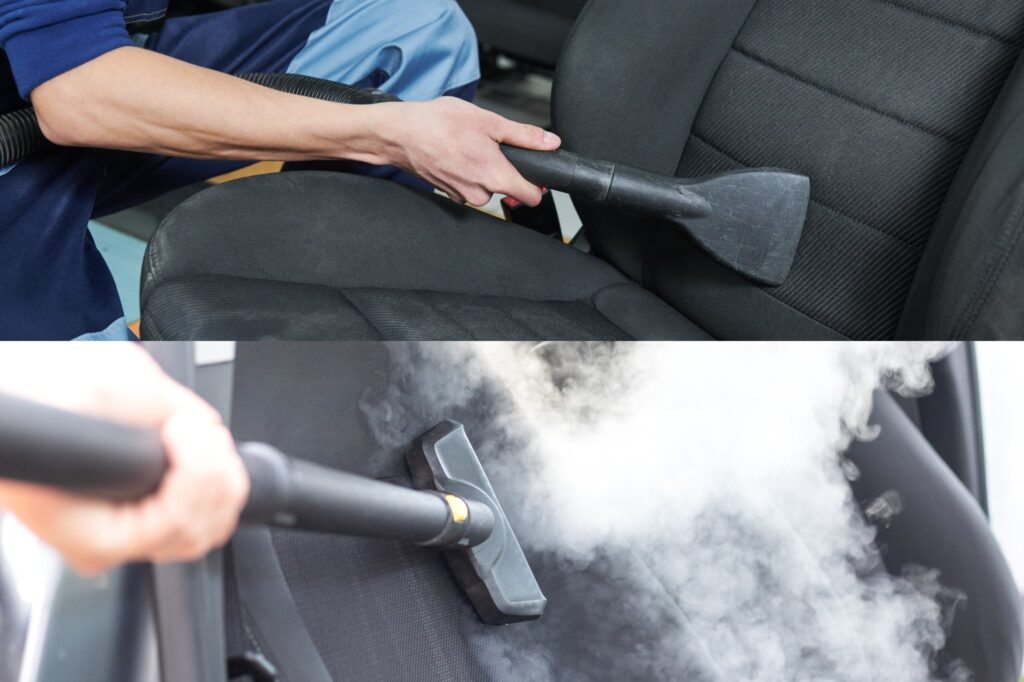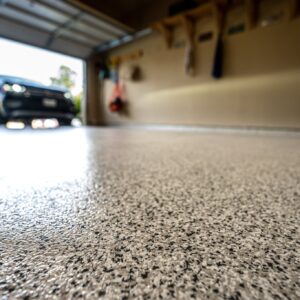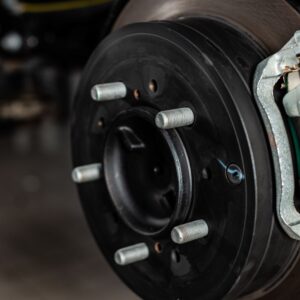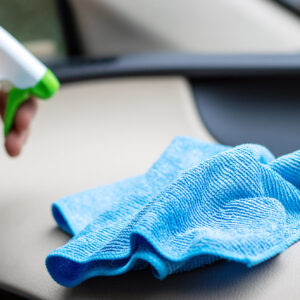It can be tricky cleaning dirt that’s embedded too deep in the fabric of a car seat. Likewise, completely removing stains can become a frustrating task if you don’t know the proper way of cleaning the material.
It’s important to familiarize yourself with how to clean cloth car seats to keep your vehicle’s interior looking and smelling good.
How to Keep Your Cloth Seats Clean
Some of the best tips for keeping your car seats tidy include frequent vacuuming, using a vinegar solution, and steam cleaning the material. If all else fails, you could always hire a professional to clean them for you.

Always Vacuum First
Failing to vacuum the dirt and crumbs away from your seats before using a cleaning solution increases the risk of spreading filth across the material. This can push dirt further into the cloth and make it even harder to get rid of. The best vacuums can be found at car washes because they have the best suction.
Use a Vinegar Solution
Mixing one cup of vinegar with one gallon of hot water creates a solution that’s just as (if not more) powerful than most cleaning products. On top of that, this solution doesn’t contain harmful chemicals, making it safer to use.
Try Steam Cleaning the Seat
Steam blows hot water vapor into the seats, removing grime and gunk deep beneath the fabric’s surface. It’s one of the most efficient ways to clean dirt off fabric seats. At the same time, steam also kills bacteria, mold, and mildew.
Hire a Professional
If all else fails and you can’t get the dirt and stains off your car seats yourself, it might be time to hire a professional. Experts will have the necessary tools and cleaning solutions to remove even the deepest stains. You won’t have to put in the time or effort either, though it might cost you between $100 and $200 for a proper deep clean.
How to Clean Cloth Seats
Here’s a quick overview of how to clean fabric upholstery in your vehicle.
What You’ll Need
Here’s a list of all the things you’re going to need if you want to clean cloth car seats effectively.
- Vacuum cleaner
- Spray bottle
- Hard bristle scrub brush
- Microfiber towel
- Sponge
- Bucket of water
- Cloth cleaning solution
- Oxygen-based bleach
Cleaning Your Car Seats
- Vacuum the seats to get rid of solid debris, dust, crumbs, and other contaminants.
This helps you make sure that dirt doesn’t spread or isn’t pushed further into the material. A good tool to use is a vacuum with a brush attached to it because it ruffles the carpet and dislodges the dirt, making it easier to suck up.
- Use a brush to remove any remaining dirt and prepare the material for proper cleaning.
- Pre-treat stains for easy removal. Work the solution into the material with the help of a scrub brush and let the solution settle for 15 minutes.
For severe cases such as dye or urine stains, apply oxygen-based bleach mixed with a few drops of water instead. Let the bleach settle for an hour before vacuuming the residue.
- Mix cleaning solution and water in a spray bottle. Lightly spray the entire seat to wet the fabric and distribute the cleaning solution for scrubbing.
- Use a scrub brush to get rid of dirt and stains alike. Make sure to start from the top so any excess water and solution drips down to the bottom of the car seat.
Rinse your brush to get rid of excess dirt.
- Wipe away excess moisture with a microfiber towel.
- Let your cloth car seat dry by leaving it alone for two to three hours.
How Often Should You Clean Your Vehicle Seats?
It’s recommended to vacuum your seats at least once a week to minimize the buildup of dirt, crumbs, and other contaminants that can stain the material.
It’s good practice to clean fabric car seats more thoroughly at least once every season, but don’t be afraid to clean them more frequently if they tend to get dirty fast.
How to Prevent Cloth Seats from Getting Dirty
It’s a good idea to get seat covers to keep dirt off your vehicle’s upholstery. You should also avoid eating and drinking inside your vehicle to prevent crumbs and spills from staining your seats. If this isn’t possible, you should at least have towels and fabric cleaners always on hand.
Always Keep a Towel Ready
Towels aren’t just used to dry things when they get wet. They also double as a good safety measure in case you have to eat or drink in the car. You can use the towel as a placemat to catch crumbs or absorb spills.
Use a Fabric Protector Spray
This handy spray-on product creates an invisible barrier, preventing dirt and stains from penetrating your fabric seats. Make sure to spray a fabric protector after deep cleaning your car seats and letting them dry.
Get Seat Covers
One of the simplest solutions to keep your fabric seats pristine is by using a good car seat cover. These covers are often made of stain-resistant materials. They’re also easier to clean and replace in case they rip. They’re also easy to remove and clean away from the seat.
Don’t Eat or Drink in the Car
Though towels can minimize the crumbs and spills from eating in the car, they’re not completely foolproof. The only reliable way to avoid having bits of food stuck in your seats is to avoid eating and drinking in the car.
Getting Your Hands on Seat Covers and Cleaning Solutions
One of the best ways to keep your cloth seats clean is to invest in seat covers. Similarly, you can get your hands on good cleaning solutions to help you get rid of any unwanted dirt or grime. Unfortunately, it can be tricky to find products that are compatible with the seats in your vehicle.
On the bright side, finding seat covers, cleaning solutions, and other related parts is easy with the help of CarParts.com.
To get started, all you need to do is download our mobile app or visit our website. Use our search tool and input your vehicle’s exact year, make, model, and engine to find various compatible components. If you need help checking for fitment or if you need help placing your order, you may call our 24/7 toll-free hotline.
Our parts are sourced from some of the most trusted names in the industry, each hand-picked by a team of professionals. By investing in some quality seat covers, you won’t have to worry about dirty seats any time soon.
The best part? Our warehouses are strategically located all over the US. You can expect to receive your order within two business days.
Shop and place your order today!
Any information provided on this Website is for informational purposes only and is not intended to replace consultation with a professional mechanic. The accuracy and timeliness of the information may change from the time of publication.


























